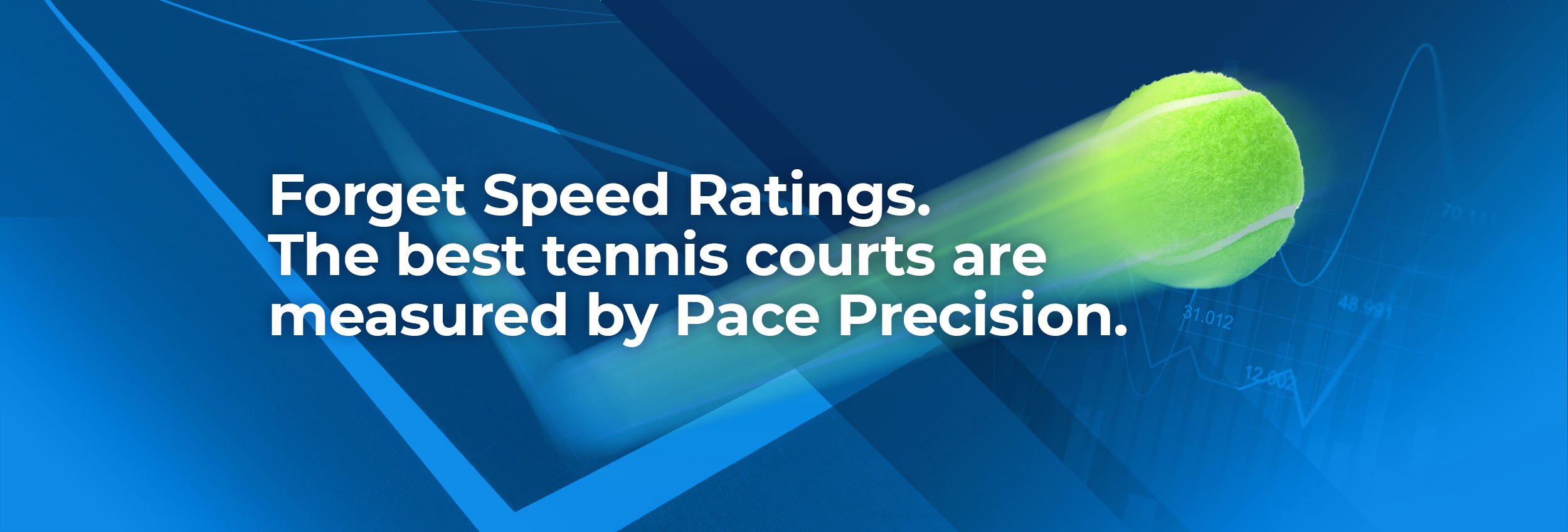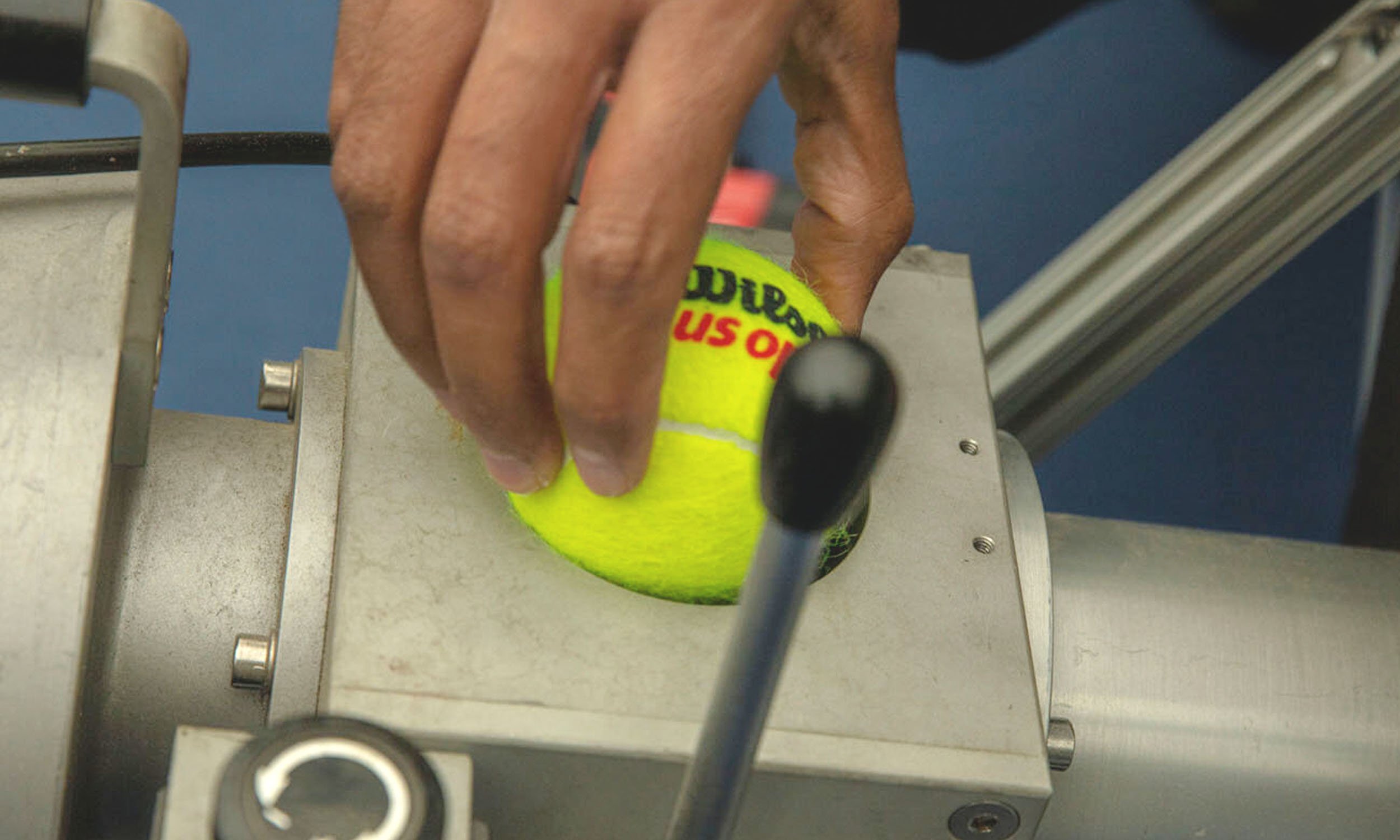Forget Speed Ratings. The best tennis courts are measured by Pace Precision
With Laykold, you can now order your court speed to within 0.5 of a point!
The world’s best tennis players regularly hit the ball over 100mph, they must react in a faction of a second and their timing has to be sublime. They play in the zone, flowing from moment to moment, within this rarefied space the pace of the court itself is crucial to performance and outcome.
Now, with Laykold, the world’s best tournaments can demand pace precision like never before, matching the extraordinary accuracy of the elite athletes who play on their courts.
Traditional Speed Ratings are behind the pace
An average first serve in men’s tennis is approximately 115 mph, which gives a returner 0.47 seconds to react. These are intense performance parameters which are not matched by the International Tennis Federation (ITF) court speed classifications.
The ITF classifies courts in categories of 1 to 5, with court pace ratings (CPR) based on a relatively wide-ranging points scale. For example, a medium/fast court would have a CPR of 40-45. So traditionally, determining the pace of a court has not been an exact science, and does not match the exacting performance needs of the most highly trained athletes on the planet.
Laykold and the US Open set a new standard for pace precision
In 2020, the US Open, the fastest hard-court tournament in professional tennis, selected Laykold for its first change of court manufacturer in 42 years. With both tournament organizers and players requiring consistent pace on practice and competition courts, Laykold needed to serve up its scientific strengths.
Tapping into 25 years of exhaustive surface testing, Laykold developed a formulation database that enables its scientists to perfect how they dial in those pace ratings. This allows speed to be tailored to individual tournaments to within 0.5 of a point.
After the 2020 US Open, Daniel Zausner, Chief Operating Officer, USTA National Tennis Center reported that; “With excellent consistency across all courts, Laykold was able to meet the US Open pace rating and performance exactly.”
“With excellent consistency across all courts, Laykold was able to meet the US Open pace rating and performance exactly.”
A granular level of accuracy
To deliver this level of pace precision, the type and blend of sand used in the court surface is critical. The specific angles of the grains and how they interact with the grains around them determine the levels of friction between the ball and the court, rendering them agents of pace.
As Wesley Baum, R&D Chemist and Technical and Field Support Manager for Laykold explains:
“Our proprietary blend of sand goes through gradation analysis to test its sieve curve. The tighter the curve, the lower the chance of deviation to court speed, ensuring consistency of surface pace and speed of play which is a major factor in pinpointing the level of pace accuracy that Laykold courts can now achieve.”
Setting the pace for the court surface industry
Ensuring accuracy across the different courts (43 in total) is all part of Baum’s job. “The way that the US Open is set up, there are 13 practice courts and they’re used by the public across the year, so the pace for those courts is set at medium. However, a medium-fast pace is required for the US Open so we need to adapt those court speeds for the tournament as well as dialling in exact pace ratings across all of the main tournament courts. It is a very tailored and meticulous process which has taken years of trial and expertise to optimise.”
Baum will be with his crew at Flushing Meadows for five weeks to install the surface to the US Open’s exacting standards. The precise pace they request remains a well-guarded secret, but the Laykold crew will hit it within 0.5 of a point. Their experience, backed by 25 years of R&D, is setting a new pace for the court surface industry.



